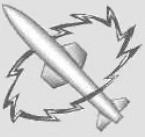timtom
Posts: 2358
Joined: 1/29/2003
From: Aarhus, Denmark
Status: offline

|
Old post from a few years back ->
quote:
ORIGINAL: timtom
Regarding operational training, I think it's useful to sort out what is/was actually meant by the term. Confusion arises from the fact that the term meant different things to different services (if at all) and often used dialectially in a manner different from the original meanings (if any).
Prior to the outbreak of war, all the major air services conducted training along broadly similar lines. Trainees were given basic flight training of about 200 hours. Basic training was segmented into primary, intermediate, and advanced phases with aircraft flown becoming increasingly demanding (the RAF initially only had the first two stages). "Primary", "intermediate", and "advanced" weren't necesarily the terms used by individual services and is only used here in a general sense. During the "advanced" stage trainees would train on obsolete combat-type aircraft. This training stage is sometimes termed "operational" in the literature, which is the term used by the RAF and its sister-services but not by other services (in the USAAF an OTU had a different function, fx). However what is remarkable about basic training is that it was broadly similar in length and structure between the services and remained so in outline throughout the war, nonwithstanding that those who could afford it lengthened training and those who couldn't shortened it.
The way the term "operational training" is commonly used on the forum is to denote training AFTER graduation from basic training but BEFORE assignment to a combat unit proper, like that conducted by the Advanced Carrier Training Groups of the USN at the time of Pearl Harbor. Hence it's important that we're clear about what we're talking about and don't presume that all mention of operational training means the same thing. Here I'll use the term to denote post-graduate, ACTG-type training.
Prior to the war, all the major services conducted operational training within the combat units themselves. A trainee would graduate and then be assigned a combat unit within which he would then receive additional training prior to being deemed combat-ready. This made sense because of budget restraints and the redundant capacity within the combat units themselves. Within the IJNAF fx, this apprenticeship lasted 12 months. This system worked fine in peacetime, but essentially broke down in wartime.
The RAF was the first service to introduce operational training, but since there was no third segment in RAF et al's basic training, operational training here was essentially equal to the advanced training provided by other nations except that the pilots would fly the same types of aircraft they would operate in combat instead of ex-service types. Later on the Conversion Units would operate in an OTU-esque manner, of course.
The IJNAF never introduced operational training units and the IJNAF only on a limited scale from late '44 onwards. Otherwise there was nowhere for the Japanese pilot to go between basic training and assignment to a combat unit. [K subsequently reminded me of the IJAAF Yasen Hoju Hikotai/1st Field Air Replacement Unit in existance at the outbreak of war]
The USAAF introduced a transitional training course in late '42 which gave 10 hours flight time to fighter pilots and 110 to bomber pilots, although it wasn't until '44 that a majority of pilots underwent transitional training and even then the emphasis was on bomber pilots. From late '42 a pilot could further be allocated an Operational Training Unit, whose function was to provide cadre for the formation of new units, or a Replacement Training Unit, which provided replacements for existing units. Training within these units were 60 hours in type, rising to 120 hours from mid-'44. On top of this each Air Force supposedly operated informal "trade schools" in theatre, although that's about the extend of my knowledge on the subject.
Within the the USN, the ATCG (later RAG) course was pecked at 75 hours of flight time, which later fell to 60 hours, although at what point the pilot would have received an additional 147 hours in basic. However the Navy Department system of replacing whole units rather than individuals meant that pilots would train within CAGs for up to a year or more before deploying, at least from the post-Guadalcanal period onwards.
Over and above this it wasn't uncommon to operate combat units in the operational training role - I think I've mentioned the Chitose Ku during much of '42 and MAG 11 on Samoa during much of the same period.
_____________________________
Where's the Any key?  |
 Printable Version
Printable Version















 New Messages
New Messages No New Messages
No New Messages Hot Topic w/ New Messages
Hot Topic w/ New Messages Hot Topic w/o New Messages
Hot Topic w/o New Messages Locked w/ New Messages
Locked w/ New Messages Locked w/o New Messages
Locked w/o New Messages Post New Thread
Post New Thread